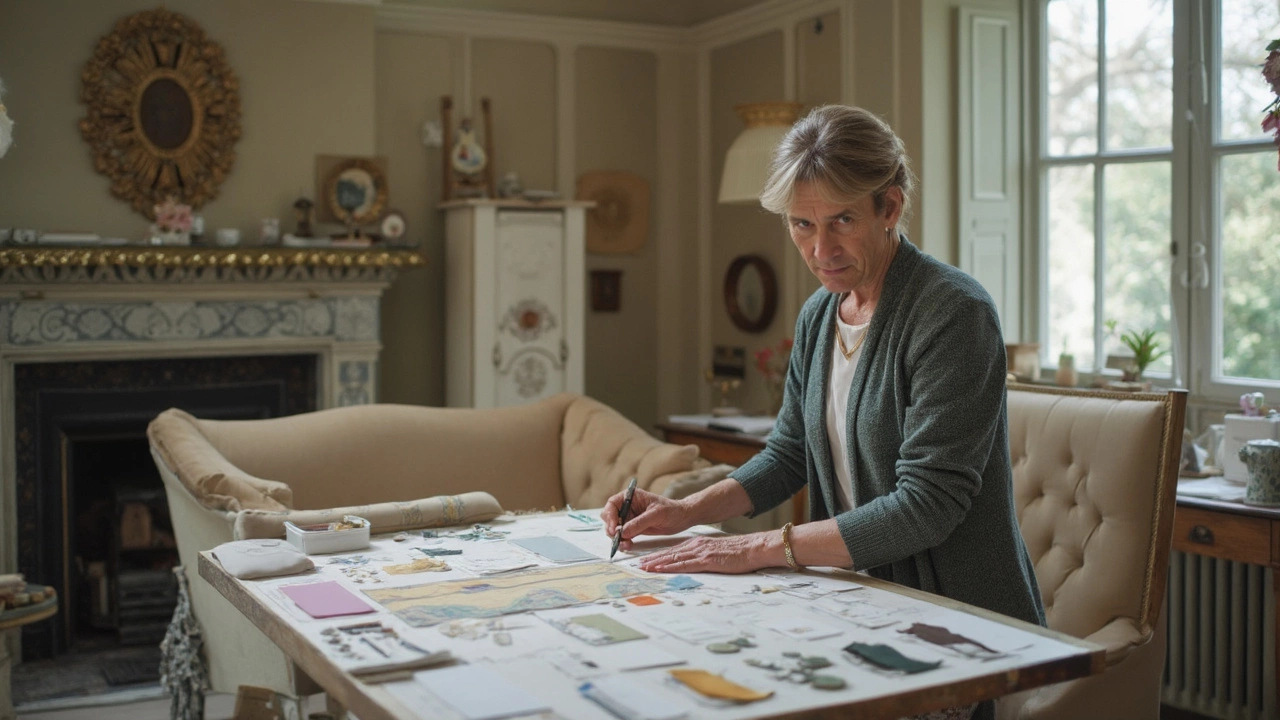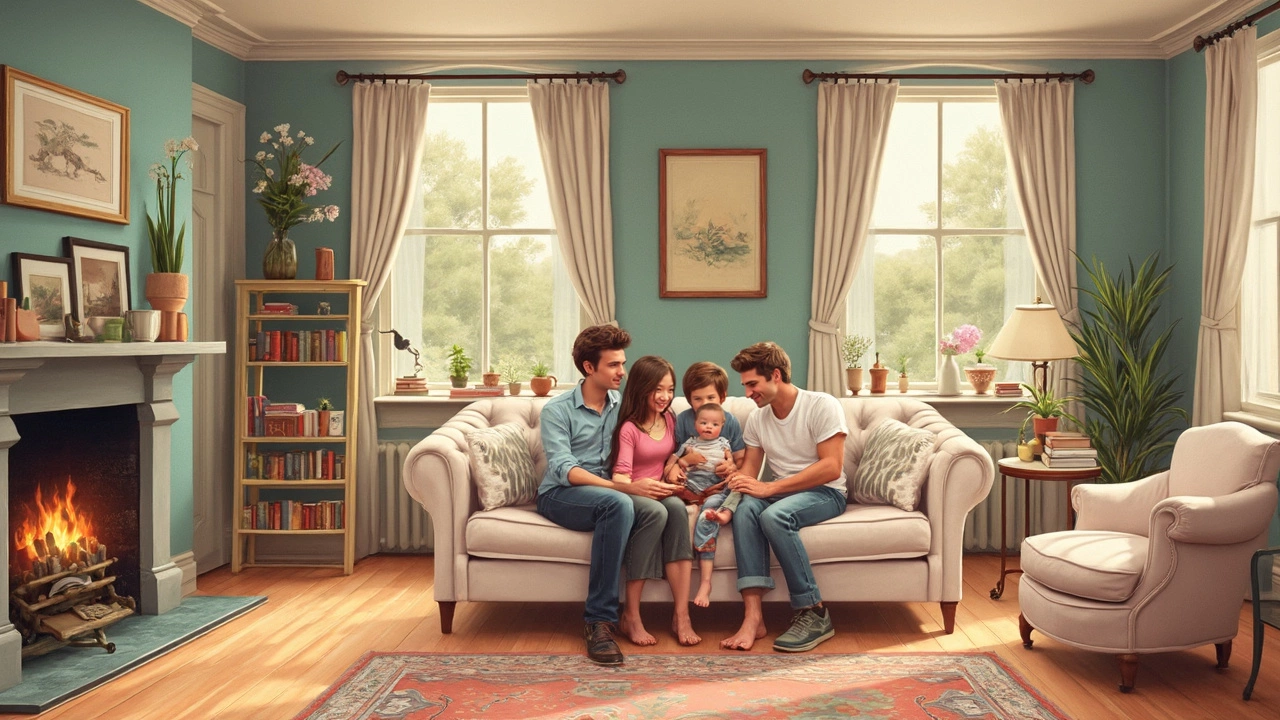When you're in the market for a new sofa, figuring out how much to budget can be a bit of a head-scratcher. Sofas range in price from a couple hundred bucks to several thousand, leaving many to wonder, 'What's a fair price for a good one?'
The truth is, a good quality sofa is more about value than just price. You're paying for materials, craftsmanship, brand reputation, and design. So, it's crucial to understand what you're really getting for your money.
The cost of a sofa is often influenced by what it's made of. Folks say leather is pricier than fabric, and there’s truth to that. However, high-grade fabric can rival leather costs, especially if it's designer or specially treated for durability.
- Factors Affecting Sofa Price
- Material Matters
- Brand Impact
- Average Price Ranges
- Tips for Smart Buying
Factors Affecting Sofa Price
Diving into the world of sofa cost, there are several key elements that can tip the scales on how much you'll end up dropping on a good couch. Let's break them down so you can get a clearer picture.
Materials and Construction
The materials used, from frame to upholstery, play a big role in determining cost. High-quality hardwood frames last longer and naturally cost more than particleboard or softwood. For the upholstery, leather tends to be pricier compared to basic fabrics, but remember, a high-end fabric can still make your wallet sweat.
Brand Impact
Brand loyalty can be a real kicker. Premium brands market their reputation for quality and design, adding to the price tag. However, this can sometimes mean better customer service and warranties, which are worth considering.
Style and Design
Fancy designs, from classic to modern styles, can increase the price. Custom or limited-edition designs are even more expensive. If you're into the latest trends, be ready to pay for that sleek new veer.
Manufacturing Costs
Sofas made in areas with high manufacturing costs due to labor and materials are often more expensive. However, they might also adhere to higher production standards.
Market Demand
Like most things, higher demand equals higher cost. Sofas that are in vogue or hyped up on social media or design shows often see their prices climb.
Additional Features
Extra features like reclining functions, built-in storage, or modular capabilities can also contribute to the overall sofa price. They offer added convenience, but each feature usually comes with an extra cost.
Taking these factors into account, it's easier to see why prices vary so much. Understanding what affects the price helps you decide which features and attributes are worth the extra bucks on your quest to find the perfect couch.
Material Matters
The material of your sofa is one of the biggest factors affecting its price. Let's break it down to see where your money goes.
Fabric Sofas
Fabric sofas are popular for their comfort and variety. They come in cotton, linen, synthetic blends, and more. While cotton is breathable, it's not very stain-resistant. Linen looks classy but wrinkles easily, and synthetic blends often balance durability with affordability.
If you're worried about stains, look for fabrics with a performance-grade rating, which means they're treated to resist spills and wear. This can bump up the price but adds peace of mind, especially with kids or pets around.
Leather Sofas
Leather might feel like a leap in your sofa budget, but it's all about longevity. Top-grain and full-grain leathers are more expensive but very durable, often lasting decades. While they initially cost more, think of them as an investment piece, adding character as they age.
If full-grain leather stretches your budget, look into bonded or faux leather. They mimic the appearance without the hefty price tag, though they might not last as long or feel as luxurious.
Wooden Frames and Fillings
Don't forget what's inside your sofa! A sturdy frame is crucial for durability. Hardwood frames like oak or maple ensure the sofa holds up over the years but will cost more than particleboard or plywood.
For fillings, foam is the standard but varies in density. A dense foam keeps its shape longer, but if you want a softer, more luxurious feel, look for feather or down fillings, which tend to be pricier.
A simplified breakdown of typical costs by material:
| Material | Typical Cost Range |
|---|---|
| Fabric (Basic) | $600 - $1,200 |
| Leather (Full-Grain) | $1,500 - $4,000 |
| Wooden Frame (Hardwood) | + $300 - $800 |
When choosing, balance your needs with your budget. Consider how much wear and tear your sofa will endure and whether you’re DIYing re-covers or relying on pros. Your preferences can adjust what you'll ultimately pay.

Brand Impact
The price tag on a sofa can often echo its brand name. Big-name brands usually charge more, but that doesn’t always mean you’re getting the best deal. So, what role does brand really play in the cost of a quality sofa? Let's break it down.
Reputation and Trust
Brands with a long history in the furniture market are often trusted more by consumers. They’ve built reputations for producing reliable, sturdy furniture. Think of giants like Ashley Furniture or IKEA. These brands are known for consistency, but their prices might include a premium for that trust factor.
Design and Exclusivity
If you're looking at a designer piece from a popular brand, expect to pay a premium not just for design, but for exclusivity. Brands like Restoration Hardware or Pottery Barn churn out stylish choices that are aesthetically pleasing, boasting both luxurious looks and well-crafted designs.
Often, these are limited edition pieces, and that exclusivity jacks up the price. However, they might retain resale value better than lesser-known brands because of their renowned status.
Production and Material Costs
Brands invest differently into production processes and materials. Some companies control every aspect of production to promise higher standards, driving costs up. Others might import materials, which can be cheaper or more expensive depending on the origin and quality. A sofa brand that opts for sustainably sourced wood or eco-friendly materials may reflect those costs in their pricing, painting a picture of ethical choices.
It’s worth considering how much influence a brand name should have on your decision. Often, lesser-known brands offer similar quality at a fraction of the cost. What matters most is ensuring you're actually getting a reliable piece and not just a logo.
Average Price Ranges
Nailing down how much you should spend on a sofa can range widely depending on your needs and preferences. But let's dive into some real numbers to give you an idea of what you're looking at in the market today.
Budget Sofas
If you're trying to stick to a tight budget, you can find decent sofas priced between $300 to $700. These are often mass-produced and might not last as long, but they can be a good fit for temporary needs or first apartments.
Mid-Range Sofas
For those who are looking for a bit more durability and style, mid-range sofas hover around $800 to $1,500. Here, you're likely getting better materials and more design variety. These sofas often hit the sweet spot between quality and affordability.
High-End Sofas
On the higher side, when quality is non-negotiable, you're looking at prices upwards of $2,000, with some pieces reaching well over $5,000. At this level, expect premium materials like top-grade leather or high-end, durable fabrics, crafted with outstanding attention to detail.
An interesting thing to note is that buying a sofa doesn't just stop at the price tag. Delivery, assembly costs, and any additional warranties or protection plans might catch you off guard. Always factor in these extra expenses when budgeting for your perfect sofa.
| Price Range | Quality Level | Expected Lifespan |
|---|---|---|
| $300 - $700 | Budget | 3 to 5 years |
| $800 - $1,500 | Mid-Range | 5 to 10 years |
| $2,000 and up | High-End | 10+ years |

Tips for Smart Buying
So, you’re ready to purchase a quality sofa but want to be smart about it? Great decision! Let’s break down some actionable tips that’ll make sure you get the best bang for your buck.
Set Your Budget First
First things first, decide how much you're willing to spend. Remember, a great sofa cost can vary widely. Knowing your limit helps narrow choices and avoid splurging on unnecessary frills.
Try Before You Buy
If possible, visit a showroom. Test out firmness, back support, and overall comfort. A sofa that looks good might not feel good, and comfort should be your top priority.
Check the Frame and Construction
A sturdy frame means a long-lasting sofa. Go for kiln-dried hardwood if you want something durable. Ask about joint construction – screws and dowels are better than staples and glue.
Don’t Forget Fabric Considerations
Picking the right fabric isn't just about looks. Consider your lifestyle. Have pets or kids? Go for durable, easy-to-clean materials. High-quality fabric can add to sofa price, but it’s worth it for longevity.
Look for Warranties
Quality sofas often come with a warranty covering defects in materials and workmanship. Check what’s included in the warranty to avoid unexpected expenses down the road.
Fast Facts for Buying
| Factor | Budget-Friendly | Premium |
|---|---|---|
| Frame Material | Plywood | Hardwood |
| Upholstery | Polyester Blend | Natural Leather |
| Average Price | $500 - $1000 | $2000+ |
Armed with these tips, finding the perfect sofa set becomes a whole lot less daunting. Remember, you’re looking for value, not just a price tag. Happy shopping!


Write a comment